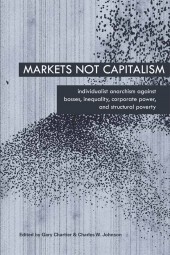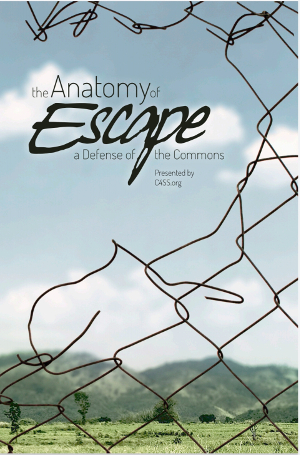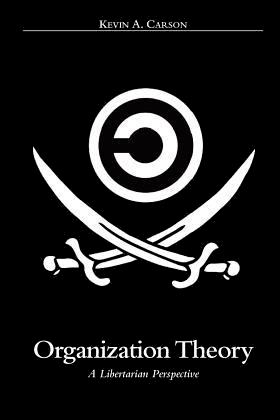Rethinking systems for structuring and using time
Time is fundamental for human existence and experience. Societal frameworks for structuring and understanding time and temporal experience have, however, remained stagnant and are potentially no longer fit for their intended purpose or, more importantly, the purposes we might intend for them at present. Indeed, when considering the history of sciences and ‘ways of knowing’ more broadly, paradigms used by societies, (sub-)cultures, and (scientific) communities for understanding, knowing and living have not-infrequently shifted, adapted and generally changed; these paradigms are, however, usually predicated, or even entirely centered, upon particular conceptions of time.
Take ‘the Gregorian Calendar’ system – based on a 365-day common year with 12 irregular months – which was introduced in 1582. This calendar continues to be used in most parts of the world despite increasing environmental dynamism (including volatility and uncertainty) and accelerated technological advancements. This means that the societies, and the pace at which they change, that this calendar system was introduced in very starkly contrast with the societies currently using it (to the extent of being almost completely beyond recognition). The way people lived their lives in the 16th century and even as recently as the 20th century is very different to the 21st century.
While there would have been sociocultural, agricultural, commercial, and administrative motivations for transitioning to the Gregorian calendar, these spheres of activities are significantly different to what they were in preceding centuries. Whether it be accelerated globalisation, the ubiquity of computing and information technologies or gradual transitions away from agriculture and pre-industrial manufacturing as being the bases for economic activity, the Gregorian calendar system was not designed with our present reality in mind. Though changes to these socioeconomic phenomena manifest disparately (e.g. in the Global North vs South, in rural, semi-rural, or urban communities, in high-, middle-, or low-wealth countries, in different populations and ecological systems etc.), the fact remains that humanity’s general mode of existence worldwide has fundamentally altered when compared to the 16th century.
ISO 8601 is an international standard for presenting date, time of day, coordinated universal time (UTC), local time offset to UTC, time intervals and recurring time intervals. It uses the Gregorian calendar as its basis and seeks to help with the removal of doubts that can result from the various day-date conventions, temporal cultures, and time zones that impact a global operation. However, while it seeks to improve cohesion, the primary aim does not appear to be to accelerate universal progress or to enable optimality aligned with the plethora of variegated activities that civilisations and societies undertake.
Systemic dysfunction
It is entirely possible that we are seeing and experiencing symptoms of systemic dysfunction arising from how we deploy frameworks for structuring time. A few examples include increasing calls for a ‘four-day working week,’ the reported rise of ‘employee burnout’ and observations about mental health across the world. Some more still are (the challenges of) globalised work across different time zones or studies demonstrating a widening disconnect with nature. Then there’s the well-documented fact of brain plasticity (and questions about what this means more generally for humanity in the information age compared to industrial or pre-industrial societies) or sleep issues, among many other phenomena. This list could go on and is not intended to be exhaustive.
Numerous other calendar systems have existed during world history and continue to operate in parallel. Preceding the Gregorian Calendar was the Julian Calendar and among the key reasons for the change was that the Julian Calendar was prone to ‘over-correcting by eight days per millennium’ while the Gregorian calendar’s ‘over-correction’ with reference to the Earth’s orbit around the Sun was much less.
Other approaches that continue to be used (noting that adherents to and members of these communities may use different terms to identify themselves) include the Buddhist, Chinese, Ethiopian, Hindu, Islamic, Jewish and Persian calendar systems, though these appear primarily to be for cultural and religious purposes (at least on a cursory examination), albeit each with their own advantages, disadvantages, technical underpinnings and intricacies. Notably, the philosophies and theologies related to, underpinning and/or associated with various religions regularly make use of different understandings of time and temporal experience. Economists, investors and market actors/ participants regularly use ‘economic calendars.’ Again however, this fits into the constraint of a calendar system and pre-existing structures for time but it is an indication of sub-optimality for these activities. Comparably, physicists have explored differing conceptions and understandings of time in their scientific endeavours, with numerous substantial advances being accompanied or enabled by contextual applications and/or re-conceptualisations of time.
Clearly, some calendar systems are used for specific sociocultural (including religious) purposes while others, such as economic calendars, are more useful for financial services and economic analysis – these can be used entirely separately to the Gregorian Calendar, in parallel, or encapsulated within it. Intriguingly, a 1998 journal article in Nomadic Peoples entitled ‘The Manipulation of Time: Calendars and Power in the Sahara’ described how “in the Saharan region it is not difficult to find peoples who use three or four different types of calendar contemporaneously, usually for organising different types of activities”.
Undoubtedly, the adoption and usage of calendar systems has been heavily influenced by sociocultural factors as well as the practicalities of agriculture, (international) trade, commerce and administration. Even so, structural fragmentation and disparities in frameworks can lead to systemic inefficiencies and/or problems; conversely, the adoption of one set of structures has the potential to amplify system-specific problems. I’m not suggesting the alternatives to the Gregorian Calendar represent absolute improvements or practical alternatives but they are illustrative of the breadth of possibilities.
Time for a change?
When considering the range of differences between societies and/or civilisations that exhibited predominantly nomadic or agrarian tendencies versus industrialisation, modernity and postmodernity, it is natural to question whether current frameworks of structuring time and temporal experience (e.g. through ongoing calendar systems, uses of time zones, clocks, seasons and subdivisions of basic standard units) are still fit for purpose in contemporary contexts and settings. Take proposals for the four-day working week as an example – who is to say that seven is the optimal number of days to have in a week and not six, eight or nine? Should we continue having 60 seconds in a minute, 60 minutes in an hour or 12 months in a year? Are years, months, weeks, hours, days, minutes and seconds even the best ways for interpersonal, collective and aggregated structuring of our experience of time?
Would there be benefits in a more malleable and flexible re-conceptualisation of seasons and months so that, in addition to their taking account of agricultural activities and sociocultural events, we incorporate other phenomena such as seasonal affective disorder and shifting seasons? After all, changes to the environment and climate, in the context of contemporary debates or otherwise, have been a fact during the planet Earth’s existence across the billions of years hitherto and the hundreds of millions one might otherwise reasonably expect it to remain habitable. Could we practically implement built-in dynamism and adaptability in our (quantitative) measures and conceptualisations of time to, for example, enable these structured systems and frameworks to continuously improve and optimise against a range of activities, circumstances and metrics such as cross-sectional and international differences in time-usage, sleep, work, leisure, globalised working and interpersonal connections across time zones, happiness, wellbeing, productivity, fitness, spirituality, the weather, and even changes to the seasons?
Future proofing
If nothing else, there seems to be several problems and issues whose underlying commonality is that they are experienced in time. Going back to calendar systems as salient examples of civilisational and societal systems for structuring time and temporal experience, it’s not clear how or why a calendar system introduced in the 16th century can be optimal for the 21st century or indeed even how it can realistically be ‘future-proofed.’
Such systems, frameworks and structures exert an enormous influence upon individuals’ and collective behaviours, outputs and outcomes; the biopsychosocial model is intuitively comprehensible for appreciating the interconnectedness of socio-environmental, biological and
psychological factors. It illustrates just how profound the consequences may be: in a nutshell, socio-environmental interactions and activities directly influence the psychology of people as well as their biology; conversely, biological factors influence psychological and sociocultural aspects. Additionally, an individual’s psychology can influence their biological and sociocultural factors. Taken together, these three sets of fundamentally interconnected factors determine our (mental and physical) health and wellbeing.
Civilisations and societies are presented with different sets of challenges and opportunities in the ‘Information Age’ and it is likely that humanity’s priorities will continue to change in future eras and epochs. Whether we are reconsidering the subdivisions of time (seconds, minutes, hours, days and weeks), the implementation of time zones, calendar systems, re-calibrating seasons, considering how/when is best to undertake various activities, we could harness considerable benefits through re-conceptualising (or modernising) the temporal frameworks and systems that underpin our collective experiences.
An experience-improving, novel framework could be dynamic and adaptable as opposed to the static and rigid status quo, continuously adjusting parameters, values and metrics while re calibrating across a range of physical, sociocultural, technological, economic, psychological and environmental dimensions that were not holistically considered in the Gregorian Calendar and associated systems. However, such dynamic systems should not be overly complex in order to ensure user-friendliness, accessibility and inclusion while placing well-being at the centre of human experience.
Moreover, such systems should be capable of simultaneously incorporating a range of priorities (e.g. optimising for growth, productivity, health, innovation, sustainability, industrial activities, spirituality and more) while having in-built fluidity to allow for the evolution of humanity’s priorities, aims and objectives as we progress through the decades, centuries, millennia and beyond. There could be a cross-cutting, integrated set of superstructures that allow for localised and/or contextual flexibilities such as for specific types of activities, communities and/or circumstances. At present, this happens to some extent (e.g. physicists use varying conceptions of time for scientific endeavours dependent on context, aims and purpose, economists and financial markets use economic calendars, and various ethno-cultural and religious groups implement requirements-based subdivisions of time) but it is unintentional and not systemically cohesive. Intentionally aiming for optimality across a range of factors can facilitate benefits beyond those previously realised by the Gregorian Calendar and related systems.
Using science, technical expertise and (cutting-edge) technology underpinned by inclusive deliberation and collective decision-making, we can reinvent these systems to accelerate progress and better optimise against prevailing priorities. I would urge people from all walks of life and backgrounds, if they see value in this line of enquiry, to consider these questions and related subject matter as it pertains not only to their fields and areas but also the interrelation between and overlap with others.’







